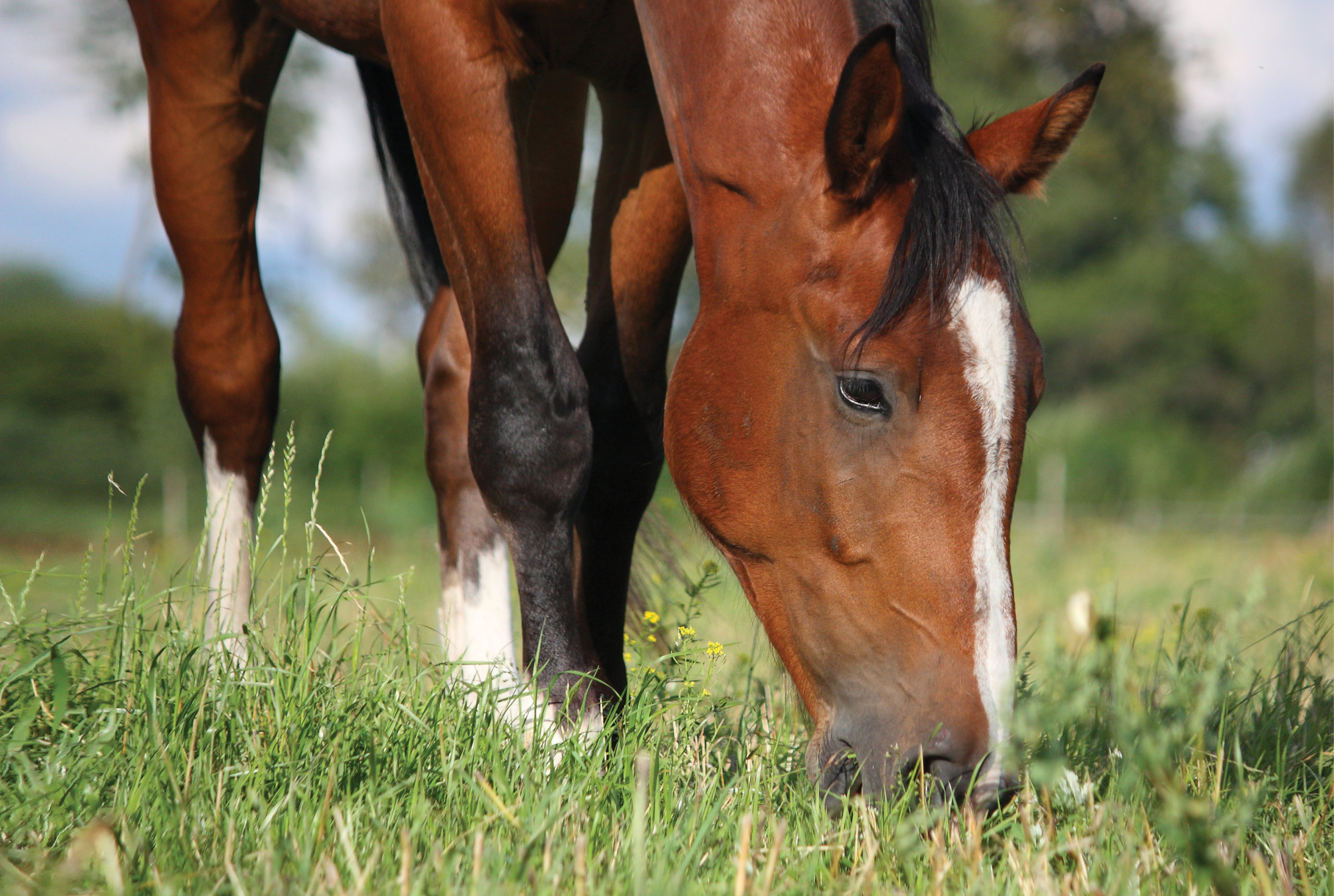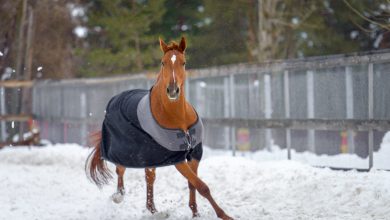
We anticipate loads from our horses. We put them up in stalls, climb on their backs, put metallic of their mouths, and anticipate them to run, leap, slide, and spin at a second’s discover. Generally it’s scorching, generally it’s chilly, and generally the work could be very onerous. More often than not our equine companions step as much as the plate and provides us the whole lot we ask for, even on days when they could not really feel so nice. That’s proper. Horses are forgiving creatures, they usually typically intention to please. How will you inform in case your horse is blissful?

There are definitely occasions when your horse is something however shy about expressing his emotions of discontent. He’ll exhibit unhealthy conduct like bucking, bolting, and rearing, or might merely refuse to maneuver in any respect. At different occasions, he might not be so apparent, and recognizing these refined indicators that your horse isn’t blissful could make or break his future. Certain, with sufficient pressure and coaching tips even the unhappiest of horses can normally be satisfied to get to work, usually with a shutdown demeanor and a way of resignation. However is that basically what you need? I believe most riders agree {that a} keen, blissful accomplice will not be solely extra enjoyable, but in addition extra more likely to advance alongside the coaching course of. And if it’s aggressive success you’re after, a cheerful horse is more likely to seek out his strategy to the win.
On this article, I’m going that can assist you acknowledge refined indicators of ache or stress, so that you’ll know what to look at for. Then, I’ll aid you develop a plan to determine and handle potential issues earlier than they turn out to be extreme. By listening to your horse, you’ll know when it’s time to make an adjustment in your administration or coaching plan that simply would possibly imply the distinction between a profession minimize quick and long-term success.
Learn Extra: Matt Mills’ Suggestions for Preserving His Horses Wholesome and Comfortable
What to Watch For
Do you suppose your horse? It would shock you to study that house owners usually fail to acknowledge when their horse is careworn or lame. In a single latest research of greater than 500 horses assumed to be “sound” by their house owners, nearly half have been decided to have musculoskeletal issues. And in one other survey of 200 house owners, 85% missed indicators of stress recognized by equine conduct specialists. As a rule, indicators of ache are attributed to “unhealthy conduct,” and indicators of despair are misinterpreted as “mellow.” Let’s check out among the refined indicators of stress your horse could be sending your route, so that you don’t make the identical errors.
Stall conduct: Is your horse extraordinarily quiet in his stall? Research present that horses exhibiting lengthy bouts of immobility within the stall with their ears, neck, and head held in a hard and fast place could also be affected by despair. They’ll maintain their eyes large open and will blink much less regularly than their extra lively stable-mates.
In lots of instances, a horse that’s depressed and withdrawn can be much less seemingly to answer exterior stimuli, reminiscent of a loud noise. He’s merely tuned out to the world. A cheerful horse is more likely to come greet you along with his ears pricked ahead once you come to catch him for a trip. A careworn horse is extra more likely to stand within the nook and ignore you.
Preparing: If you do take your horse out of his stall, does he observe you willingly or do it’s a must to drag him to the tack-up space? And when you get there, does he appear withdrawn or is he interactive? A careworn horse might stand extra quietly than regular, and you must discover if he’s withdrawn and tuned out to what’s occurring round him. Alternatively, does he paw, raise his hind legs, or simply typically act out whereas he’s being groomed? He could also be careworn or in ache and attempting to inform you that he’s nervous in regards to the work to return.
Tacking up is one other key time to concentrate to your horse’s conduct. Does he pin his ears, transfer away once you strategy with the saddle, or exhibit constant “cinchy” conduct? And what in regards to the bridle? Does he decrease his head and open his mouth willingly to just accept the bit, or does he resist your efforts by throwing his head within the air or holding his mouth clamped shut? Resistance to tacking is usually attributed to poor coaching or unhealthy conduct, however as a rule it’s an indication that one thing isn’t proper.
Lastly, does your horse stroll as much as the mounting block willingly and stand quietly when it’s time to go for a trip? Or does he paw, again away, or attempt to go away once you try to climb on board? His not-so-subtle makes an attempt to maintain you off his again shouldn’t be ignored.

Throughout work: It may be troublesome to know whether or not coaching troubles are the results of ache or just unhealthy conduct. It’s additionally important to study the distinction. That’s why researchers in the UK got down to develop a listing of 24 behaviors which might be more likely to point out your horse is in ache when he’s being ridden, starting from head tossing to tail swishing. In spite of everything, you wouldn’t need to put your horse in a tool to carry his mouth closed or forestall him from tossing his head if he’s merely attempting to inform you that he hurts. Right here’s a abstract of indicators to look at for whereas using that may inform you that your horse is in ache:
Head behaviors: Head tossing, tilting, head place held both in entrance of or behind the vertical for 10 seconds or longer, or common modifications in head place.
Eyes and ears: Ears rotated again or flattened for 5 seconds or longer, eyelids closed or partially closed for two-to-five seconds, frequent blinking, whites of the eyes uncovered or an intense “zoned out” stare for 5 seconds or longer.
Mouth issues: Mouth opening or closing for 10 seconds or longer, tongue uncovered, or transferring excessively, or the bit pulled by means of the mouth.
Tail actions: Tail clamped, tail held to at least one aspect, or tail swishing.
Gait alterations: Rushed gait, irregular rhythm, problem sustaining leads, spontaneous gait modifications, (trot to lope or lope to trot) tripping or stumbling, or dragging toes behind.
Total actions: Spinning, reluctance or refusal to go ahead, rearing, bucking, or kicking out with the hind legs.
Are you seeing any of those indicators? Researchers who developed the ridden horse ethogram concluded that these behaviors are 10 occasions extra more likely to be seen in a lame than a non-lame horse, and {that a} horse exhibiting eight or extra of those described behaviors was normally lame. It’s unhappy that many of those behaviors get attributed to poor coaching or just unhealthy conduct. Don’t make that mistake. In case your horse is sending a refined SOS, it’s your accountability to attempt to discover out why.
Seven Sources of Unhappiness
You’ve seen the indicators that your horse is careworn, and perhaps even in ache. So how are you going to decide what’s improper? The next are among the most typical explanations for a horse to be sad:
Lame: Lameness doesn’t at all times imply your horse is holding a leg up within the air or hobbling down the barn aisle. Indicators will be way more refined than you suppose. Contemplate scheduling an appointment together with your veterinarian for a primary lameness examination that features stress exams and an under-saddle examination. Bear in mind, the vast majority of house owners fail to acknowledge when their horse is lame—and the information consists of professionals and amateurs alike! You could be stunned at what you study.
Sore: Do you’re employed out on the gymnasium? In that case, that it’s potential to be sore with out being injured or “lame.” In the course of the course of a lameness examination, your vet might decide that your horse is just muscle sore. Acupuncture, bodywork, stretching workouts, and modifications to your coaching schedule to permit your horse some downtime could also be all it takes to handle his discomfort. And again soreness will also be a sign that it’s time to think about saddle match.
Learn Extra: 4 Methods to Make Your Horse Depressing
Ulcers: Gastric ulcers are painful and might trigger all kinds of indicators. They’re simple to diagnose, and efficient remedy is broadly accessible. Ulcers will also be a complicating issue that accompanies different sources of ache, reminiscent of an undiagnosed lameness. Ask your veterinarian that can assist you schedule an endoscopic examination of your horse’s abdomen to both rule-out or diagnose abdomen ulcers as a potential contributing issue to his unhappiness.
Dental points: Your horse’s mouth generally is a vital supply of his discomfort, particularly if he’s displaying indicators reminiscent of a gaping/open mouth, protruding tongue, head tossing, or irregular head positions when ridden. Even when your horse has had common dentistry, dental issues that trigger ache can come up between appointments. An intensive examination of the mouth typically requires sedation and a full mouth speculum. Your vet may advocate further diagnostics, together with radiographs or an endoscopic examination.
Poor-fitting tack: Sick-fitting tack generally is a vital supply of ache and discomfort. In case your horse appears notably careworn once you’re approaching him with the saddle or tightening your cinch, tack match could be one thing to think about. Your vet may have recognized again ache throughout a lameness examination. In some instances, the kind of saddle pad could make a distinction, as can the appropriateness of the bit and bridle setup. Contemplate scheduling an appointment with a certified saddle fitter and asking for recommendation from an expert who’s well-educated in bit and bridle match.
Poor using: Rider ability generally is a robust issue to deal with, notably if it requires admitting that you can be inflicting ache and contributing to your horse’s unhappiness due to a lack of knowledge. That mentioned, an unbalanced rider places stress and pressure on a horse’s again, and uneducated arms will be onerous on a horse’s mouth. In the event you’ve dominated out different potential causes to your horse’s unhappiness, think about consulting with an skilled coach who would possibly be capable of assist. Veterinarians know effectively {that a} “change of rider” can usually resolve a horse’s bodily misery, however that’s not a straightforward suggestion to make. In the event you uncover that your horse’s indicators of unhappiness are diminished when he’s being ridden by somebody with extra expertise, it could be time to take a look at what steps you may take to enhance your expertise.
Overfaced: Final however not least, each horse doesn’t have the flexibility to carry out each activity. Simply since you bought a horse to be a top-notch reiner or a successful barrel horse doesn’t imply he has what it takes. And simply since you need to attend subsequent 12 months’s world championships, doesn’t imply your horse is prepared. In case your calls for outstrip your horse’s skills, he’s more likely to get sore and careworn. In the event you can’t determine another purpose why your horse could be sad, it could be time to take an up-close have a look at whether or not you’re merely anticipating greater than he can ship on the time. Bear in mind, most horses are beneficiant and forgiving. It’s as much as us to concentrate to the refined indicators that they’re distressed. By listening to your horse and taking a step again, you would possibly even uncover that the trail to success is simpler to seek out.
Be taught Extra: Horse&Rider OnDemand


